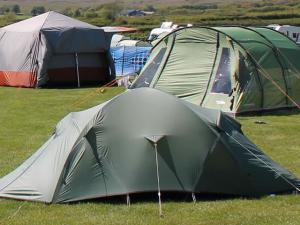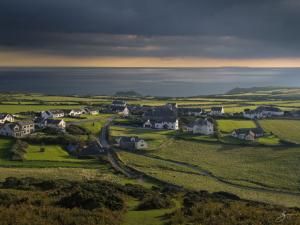Port Eynon Bay
Taking its name from the Welsh prince Einon ap Owain Hywel Dda, who invaded Gower in 970 a.d., Port Eynon was a thriving and bustling village in the 19th Century, offering a good living to Oyster fishermen, mariners, and quarry men. Today, this achingly picturesque seaside village is far quieter, its population having plunged from around 240 in 1850 to its current level of around 140. Of course, the hundreds of campers who holiday here each summer disguise the usual calm that settles over the village for the majority of the year.
Port Eynon is currently the centre of a fierce controversy between the environmental activists and the sand dredging companies that lift thousands of tons of sand from the Bristol Channel each year. Suffering like no other beach on the peninsula, Port Eynon's once wide stretch of sandy bay has now receded drastically behind newly revealed rocky outcrops that had hitherto not been exposed here since prehistoric times.
One part of the bay that has always been rocky is Sedges Bank, located on the far right of the bay, past the ancient Salthouse ruins. Protected by the Glamorgan Wildlife Trust, all 86 acres of the site have been a nature reserve since 1966. An important habitat for all seashore life, Sedges Bank is the only remnant of the sand bar that once enclosed a now extinct salt marsh at Port Eynon.
An interesting sight from here are the two orange buoys that can be seen floating in the sea towards the centre of the bay. These mark the undersea remains of the pleasure cruiser "Prince Ivanhoe", which was wrecked here in 1981. All of its passengers were brought safely to land during the incident.
Port Eynon is Gower's most tourist orientated beaches with the largest collection of seaside shops on the peninsula.
Availability and Book Online
| Arrival Date | |
| Party Size | |
| Length Of Stay | |
















